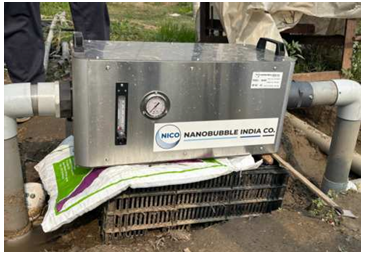As water utilities across the country, operationally minded teams focus on how to best deliver water to customers in a cost-effective manner. Components contributing to operational efficiency inside a water utility include resource utilization, supply chain management, billing processes, customer service, and employee safety. All of these components work together in balance to support seamless operations. Operationally Demanding and Resource Intensive Providing water utility services isn’t a simple process. It has long been a time- and labour-intensive endeavor.
Unlike the Telecom sector or Power Utility sector, the water segment in India is yet to achieve commercial tariff policy and thus charging for water is still a debated issue in most parts of the country, and some places. In many urban areas where meters are installed, meter readers walk neighbourhoods documenting water usage by address. Translating those meter readers records into billings and payments required significant time and resources. These operational tactics made the best of low technology situations with the manpower available; however, today’s technology is moving at a rapid pace. Technology tools and software from just a decade ago have been thoroughly updated, streamlined and optimized. Today, a prime example of the rapid improvement of water utilities technologies appears in remote control and management capabilities. Cloud-based applications and wireless communication technology have opened a new world of efficiency to water utility operators. Actions that once required several people, days to complete and trips to the field, are all now managed from the comfort and convenience of an office. With wireless communication inside hardware tools such as smart water meters and remote shutoff valves, utility team members can engage in tasks such as turning on and off water at a specific address using a simple interface on their computers. Easy map displays, simple on and off settings and rapid response have made remote shutoff exceedingly straightforward. Further, reducing the operational demand of delivering water, remote water control management removes the heavy resource burden of larger deployment of manpower into the field for operating the valves. In India, the current scenario is to manage the network on a manual basis with limited integration of technology in the operations.
In many developed countries, the post pandemic worker shortage, minimizing the need for workers in the field is an added advantage for operations managers. Employee Safety Included in Operational Efficiency In addition to the time and cost efficiency associated with tools such as remote water shutoff, these tools address the employee safety component of operational efficient water utility management. Today it’s not just about doing more with fewer people,
The water meters are only a few of the ways water utility employee safety is threatened. By removing the employee from the field, those risks are completely eliminated. Simplify Control and Improve Safety with a Modest Investment Many utilities haven’t yet taken advantage of new technology applications based on the incorrect perception that implementing remote water shut off is too costly. One point that many utilities overlook is that not all service connection sites share an equal portion of the ROI to incorporate remote shut off valves.
The Urban Water Management in Indian Metros will need to rapidly modernize in setting up strong resilient infrastructure in the form of Energy Efficient Motors, Pumps, Actuator operated Valves, Pressure loggers, Electro magnetic Flow meters, use of District Metering Areas, leak measurement techniques.
A large number of Vital water infrastructure in India managed by local Municipalities have taken up rejuvenation, upgradation , major repair and upgradation of water assets and leveraging technologies to build better delivery with better quality of water, more efficient delivery and reliable supply. Contamination has been a major issue in India due to intermittent supply and water stored at user ends in sumps often leading to contamination. Most of the water networks have yet to get mapped thru GIS mapping with real time monitoring. Water pipe line often get contaminated with dirty water leading to health issues. Mapping of water assets , monitoring of assets on a real time is key to ensuring good supplies.
IoT hardware devices including IoT-based smart water quality & quantity monitoring/detection sensors and smart water meters or water flow meters, smart water meters, flowmeters, level sensors, pump controllers (including pump monitoring sensors), pH sensors, and chlorine sensors are going to gain importance to monitor the network.
The ambitious Jal Jeevan programmes in India both in Rural and Urban areas is expected to make rapid changes in the water infrastructure.






